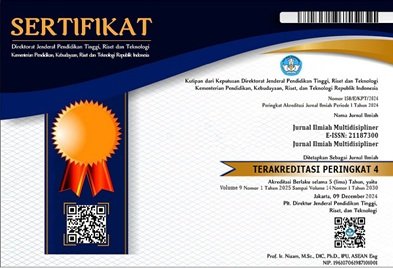UNTANGLING DISABILITY PORTRAYAL IN ENGLISH TEXTBOOKS FOR STUDENTS OF SMALB-C (INTELLECTUAL DISABILITY) IN INDONESIA
Kata Kunci:
UNDICG (UN Inclusive-Disability Communication Guidelines) 2022, Disability Portrayal, Intellectual DisabilityAbstrak
The media plays a crucial role in fostering the integration of individuals with disabilities into various aspects of social life by enhancing understanding and empathy towards disability issues. This research investigates disability portrayal (DP) in three English textbooks for SMALB-C, which C is meant for Students with Intellectual Disabilities (SWID), aiming to understand their representation and delivery. The expected significance of this study is to provide insight and facilitate a larger population, especially those who work and are associated with disability issues, to increase understanding of the recommended DP based on UNDICG 2022, which promotes and fights for the social model and inclusivity, by examining whether the three books have proper portraying DP or still contain evaded stereotypes. The textbook selection criteria were according to the availability, completeness, and compatibility of those textbooks at the level of SMALB-C in Indonesia. This research is a qualitative content analysis utilizing QCA map, which underwent rigorous processes to ensure data trustworthiness through investigator triangulation, inter-coder, and intra-coder agreement checks. The findings reveal four DP categories aligning with previous research: Human Rights, Social Model, Inclusion, and Accessibility (HRSMIA); Daily Routines, Roles, and Social Lives (DRRSL); Variety of Human Emotions and Feelings (VHEF); and Intersectional Diversity (INDI). DRRSL is the most frequently represented DP category, followed by HRSMIA, INDI, and VHEF. Subsequently, this study discovered the different and unique findings that support the inclusive and social model paradigm. The representation of Person without Impairment (PWI) in disability textbooks is great finding, as equality and equity between PWI and Person without Disabilities (PWD) is very interesting because it supports inclusiveness in its reverse form, and it is quite rare to find. The study concludes with implications for future research and suggestions to enhance disability conceptions in broader contexts, issues, and other media.





